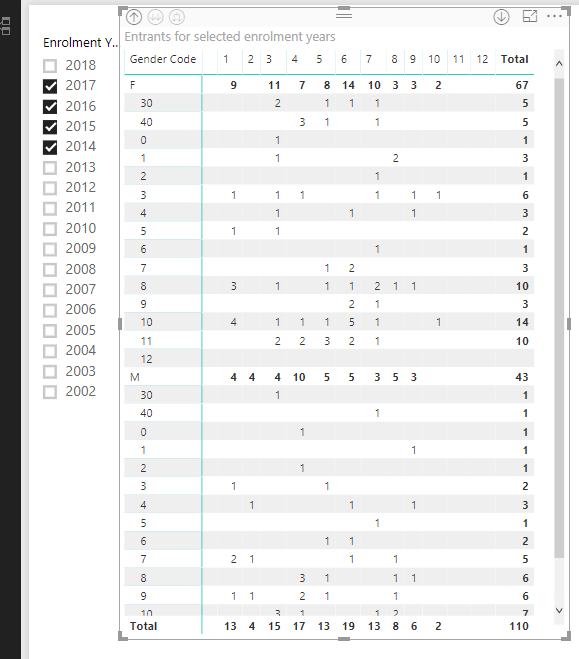Hi Sam,
Its all good in theory.
I get the number of entrants correct
but the average is up the creek.
Average =
CALCULATE(
AVERAGEX('Average Entrance', [Number of Entrants]),
USERELATIONSHIP(Dates[Date],'Average Entrance'[Confirmation Date])
)
Last I checked 2 / 4 is 0.5 - not 1.0

